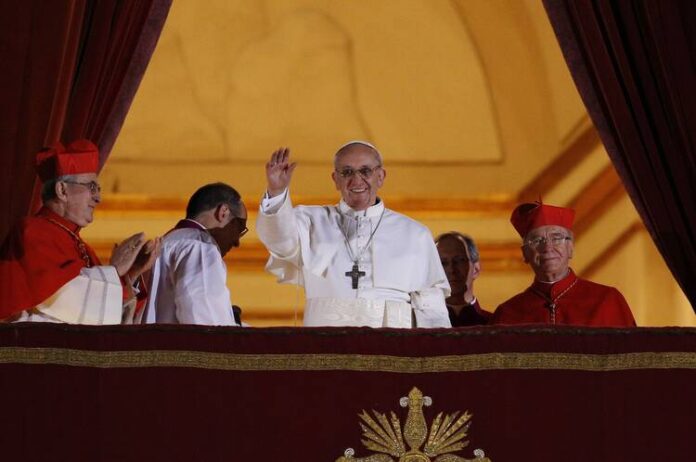Pope Francis reflects on how and where they look for the risen Jesus in this Easter season. “Where do we look for the Risen One? In some special event, in some spectacular or striking religious event, only in our emotions and sensations? Or in the community, in the Church, accepting the challenge to remain there, even if it is not perfect?”. The Holy Father asked before the Regina Coeli prayer this April 16, Divine Mercy Sunday.
Pope Francis assured that “despite all its limitations and falls, which are our limitations and falls, our Mother Church is the Body of Christ; and it is there, in the Body of Christ, where the greatest signs of her love are still and forever imprinted.
“However, let us ask ourselves if in the name of this love, in the name of the wounds of Jesus, we are willing to open our arms to those who are wounded by life, without excluding anyone from God’s mercy, but welcoming everyone; each one like a brother, like a sister,” he reflected.
Then, the Pontiff recalled that “God welcomes everyone.”
This Sunday of Divine Mercy, Pope Francis reflected on the Gospel passage that recounts the two appearances of the risen Jesus to the disciples and in particular to Thomas, the “unbelieving apostle” (cf. Jn 20, 24-29).
The Holy Father acknowledged that “Tomás, in reality, is not the only one who finds it hard to believe it, in fact he represents all of us to a certain extent.”
“In fact, it is not always easy to believe, especially when, as in your case, one has suffered a great disappointment. After such a huge disappointment, it’s hard to believe,” he continued.
Referring to the specific case of Thomas, the Pope recalled that the apostle “followed Jesus for years, taking risks and enduring hardships, but the Master was crucified like a criminal and no one freed him, no one did anything! He is dead and everyone is scared. How to trust again? How to trust the news that he is alive? The doubt was inside him.
However, Francisco continued, Tomás showed “that he has courage.”
“While the others are locked in the upper room in fear, he gets out, at the risk of someone recognizing him, reporting him and arresting him. We might even think that, with his courage, he deserves more than others to meet the risen Lord ”, he maintained.
However, the Pope pointed out that it was precisely when Thomas left and withdrew to his community, that Jesus appeared to the disciples for the first time on Easter night.
“How can you get it back? Just go back to the others, go back there, to that family that left you scared and sad. When she does, when she comes back, they tell her that Jesus has come, but she has a hard time believing it.”
It is at that moment, when Thomas returns with the other disciples, that he asks to see the wounds of Jesus.
“And Jesus satisfies him: eight days later, he appears again in the midst of his disciples and shows them his wounds, his hands, his feet, those wounds that are proof of his love, which are the ever-open channels of his mercy.” Francis expressed.
Reflecting on this passage, Pope Francis highlights that Thomas was looking for an “extraordinary sign”, but Jesus shows him his wounds “in an ordinary way, coming before everyone, in the community, not outside”.
According to the Pontiff, Jesus wanted to tell Thomas the following: “if you want to meet me, don’t look far, stay in the community, with the others; and do not go away, pray with them, break bread with them.”
“And it tells us as well. That is where you can find me, that is where I will show you, printed on my body, the signs of wounds: the signs of Love that defeats hate, of Forgiveness that disarms revenge, the signs of Life that defeats death. he added.
Pope Francis concluded by reiterating that “it is there, in the community”, where the face of Jesus is discovered and that without it becomes difficult to find him.



